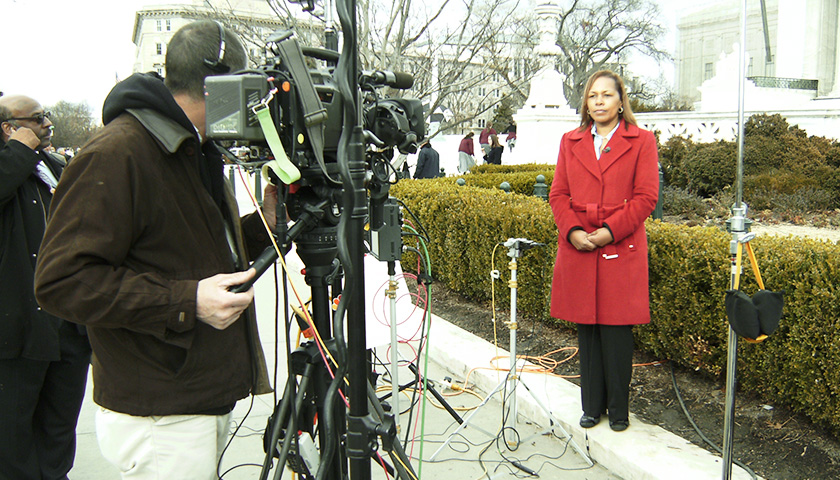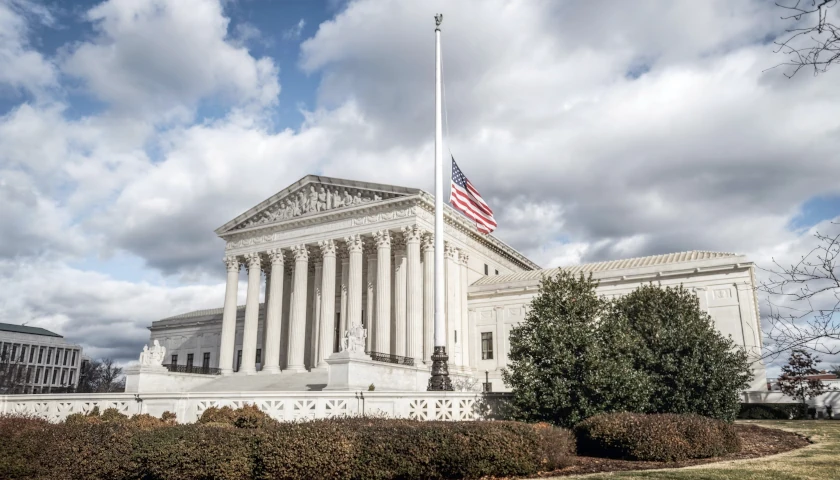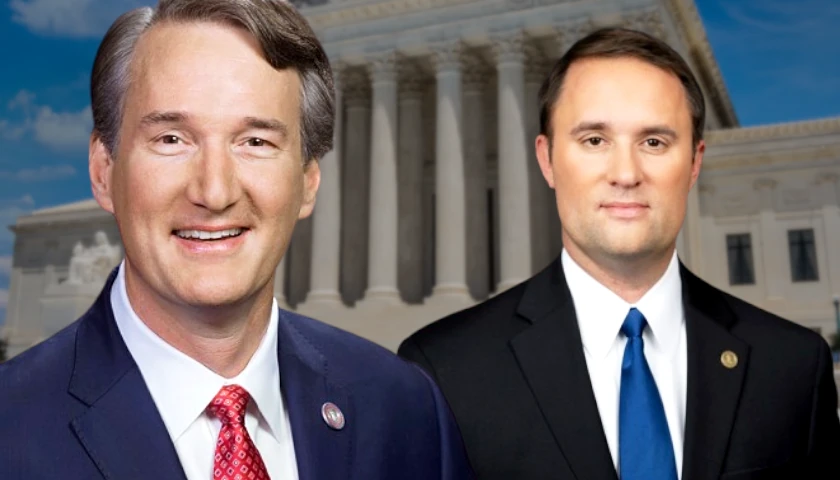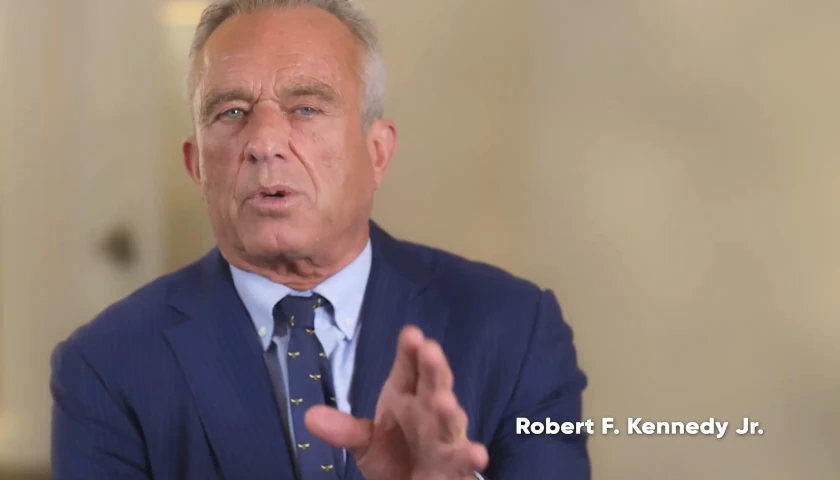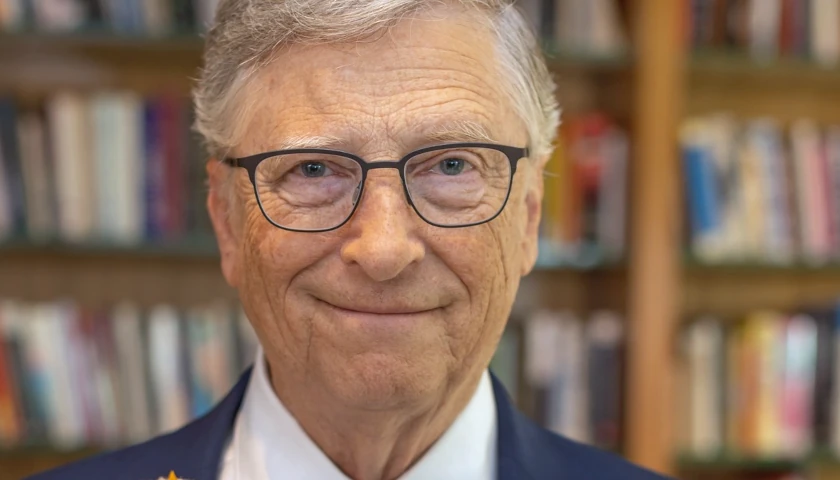by Ben Boychuk
Here is what we’re talking about when we talk about the media “Narrative.”
A 10-year-old girl in Ohio was raped and impregnated. According to the doctor who performed the girl’s abortion in nearby Indiana, the girl could not obtain the procedure in her home state because of a law that cuts off abortions after six weeks. The girl, supposedly, was three days too late to have an abortion in the Buckeye State.
It sounds like the perfect story for the post-Roe era, which is why practically every news outlet on the planet picked it up. See! See, Americans! This is what your Christofascist Supreme Court has done! Are you happy now?
Not that everyone accepted the story at face value. Naturally, some people were skeptical. Megan Fox of PJ Media was probably the first to question the story. The one obvious problem was that it came from a single source: the Indiana doctor, a well-known abortion activist and a favorite of reporters looking for a good quote.
Questions about the story’s origins and circumstances led some people – including, briefly, Ohio’s attorney general – to question if the girl even existed at all.
Yes, she does exist. Her rapist was arrested last week in Columbus. He is reportedly an illegal alien from Guatemala, and he’s being held on a $2 million bond. He may or may not have been living with his victim’s mother, who also may or may not be living in the country illegally. She apparently defended her daughter’s alleged rapist, telling a reporter from Telemundo, “everything they are saying against him is a lie.”
The corporate left-wing press met the revelation of the victim’s existence with certain undisguised glee. “The conservative effort to cast a story about a pregnant 10-year-old Ohio rape victim as a hoax has now fallen apart,” Aaron Blake wrote in the Washington Post. But PJ Media’s Fox never went so far as to claim the victim was a “hoax” and quickly updated her readers with the news when it broke Wednesday.
Let’s face it: This is one of those rare instances where a story that was “too good to check” turned out to be true. But it’s hardly surprising that readers not predisposed to believe every abortion horror story the press is so eager to peddle might cast a cold eye.
Consider the woman in Michigan who posted a video on TikTok (naturally) announcing how her physician, following the Dobbs decision, would no longer prescribe her a certain heart medication because one side effect is the possibility of a miscarriage. Her doctor, the woman claims, does not want to be held legally liable for the woman’s “abortion.”
Newsweek picked up the single-source story. The woman’s video as of Sunday morning had more than 139,000 likes, 2,394 comments, and had been shared nearly 4,000 times. Is it true? It certainly sounds plausible. The Washington Post reported Saturday that in the few weeks since the U.S. Supreme Court overturned Roe v. Wade and Planned Parenthood v. Casey “many physicians and patients have been navigating a new reality in which the standard of care for incomplete miscarriages, ectopic pregnancies and other common complications is being scrutinized, delayed – even denied – jeopardizing maternal health, according to the accounts of doctors in multiple states where new laws have gone into effect.” But is it true? Who cares? For die-hard abortion supporters in the press, the Michigan woman’s claim is another story simply too good to check.
We’re going to be in for a lot of that.
The big brains at the Nieman Journalism Lab fret that America’s journalists are not prepared for the flood of “unimaginable” abortion stories to come.
“[E]vents this week show that even if you can’t bear to believe it – even if it seems so impossible that it must receive a heartily skeptical fact-checking treatment – it is going to happen,” writes Nieman Lab editor Laura Hazard Owen. “And reporters who want to tell these stories – and the news organizations they work for – may have to abandon some conventional journalism wisdom in order to give the stories the attention they deserve.”
Much as Donald Trump’s extraordinary threat to Our Democracy™ required journalists to “reconsider” (read: wholly abandon) their professional commitment to something approximating objectivity, abortion’s return to the political process will compel newsrooms to get creative with their coverage.
“Obviously,” Owen adds, “reporters and editors must make sure that their reporting is accurate and true! But those who believe that the end of legal abortion in many states is newsworthy will need to figure out how to report and publish these stories with a few more constraints than they’d prefer.”
By “constraints,” she means figuring out how to verify those stories that are too good to check. Left unstated is how great the temptation will be to let certain standards slide “for the greater good.” The American journalism profession, already widely despised and distrusted, has little need to further alienate its readers. But, by God, they’ll give it their level best.
Decades of Decline
I’ve worked in and around newspapers and magazines for nearly 30 years. I sometimes joke that if I had any knack for numbers – or had any basic sense – I wouldn’t have gone into a dying industry that’s more about subtraction than addition. Fewer newspapers. Fewer readers. Fewer listeners. Fewer jobs. Lower revenues. Less respect all the way around – and for good reason.
The only thing journalists possess in abundance is an overly high regard for what they do. And if their diminished audience doesn’t understand what an invaluable service they provide, whose fault is that?
The profession has struggled with a trust deficit for decades. In 2010, I was approached by the editor of a major California newspaper to apply to edit the opinion pages. I was a finalist for the position, in no small part, I think, because I refused to tell them what I thought they wanted to hear and instead offered my candid assessments. They seemed to respect that. After all, they asked me.
And so, over a period of about three months, the editor would email me questions, and I would offer my answers. What did I think of this particular editorial? How would I have approached it differently? How should they cover something the governor just said? And, maybe most importantly, how would I address readers on this or that controversy in the paper’s pages?
Eventually, I was invited up for two days of face-to-face interviews and asked to submit a packet laying out my ideas for what a 21st-century opinion page should look like. I had seen the polls and studies showing deep reader distrust in the media. It was clear to me that legacy newspapers could not afford to keep doing what they had been doing and expect readers to stay.
Consider: The Pew Research Center for People and the Press has been tracking Americans’ attitudes toward the media since 1985. A 2011 report found 66 percent of Americans surveyed said “news stories often are inaccurate,” 77 percent thought “news organizations tend to favor one side,” and 80 percent said “news organizations are often influenced by powerful people and organizations.” Only 25 percent of respondents agreed that “in general, news organizations get the facts straight.”
Little has changed in the past decade. In certain respects, the landscape is much bleaker. The Gallup Organization in October found just seven percent of U.S. adults said they have “a great deal” of trust and confidence in newspapers, TV, and radio news reporting. The same poll found 29 percent of adults had “a fair amount” of trust and confidence in mass media.
So, in 2010, I told the senior management of this venerable journalistic institution the truth as I saw it. “We face two large and persistent dilemmas,” I wrote. “First, our readers – not just readers of [the paper], but readers generally – distrust us. Conservatives perceive a liberal bias and many liberals see a blinkered complacency that favors an essentially conservative status quo.”
And then I spent several pages explaining what to do about it.
The editor and publisher – both of whom have since moved on to more remunerative pastures – seemed to appreciate what I had to say. In the end, however, they went with an internal hire. As a consolation prize, they offered me a column, which I enjoyed writing weekly through mid-2019.
And in those 12 years, the paper has continued to shed staff, readership, and revenue. In 2017, the owner sold the paper’s building to a real estate investment firm, and in 2020 executives decided to move into more modest offices in a cheaper part of town.
Why Journalism Is Persistently Terrible
Many news organizations have abandoned objectivity, which was always more of an aspiration than a hard-and-fast rule. Bias is impossible to avoid. Nevertheless, it was a mistake for once-mainstream news publications to obliterate the line between news and opinion – a line that was becoming increasingly blurry even before Trump descended the escalator.
Though we sometimes joke about “layers and layers” of fact-checkers, that’s never really been true outside of places such as the New Yorker, and even that storied magazine’s standards have slipped lately. Most of what has passed for “fact-checking” over the past decade are often disagreements of opinion. And opinion tends to run only one way.
As social media has predominated and information has become more democratized, the old media gatekeepers have become obsessed with combatting “misinformation” and its more insidious sibling, “disinformation.” In doing so, self-styled professionals have abandoned their former skepticism of official government pronouncements.
Facebook and Twitter will regularly suppress content that contradicts the official government line. The Washington Free Beacon in February published an explosive story on the Biden Administration’s plan to distribute “safe smoking kits” to drug addicts at a cost of $30 million. Included in the kits: actual crack pipes. Naturally, that detail “elicited considerable blowback” (in the Free Beacon’s words).
A horde of “fact-checkers” sought to debunk the story, and Facebook began labeling posts linking to the story as “partially false,” which reduces the posts’ reach. Alan Duke, a Facebook fact-checker who is editor in chief of the platform’s Lead Stories section, explained to the Free Beacon’s executive editor that the story would remain suppressed until it was “updated . . . with the correct information, as shared in our article.”
That “correct information,” it turns out, consisted of CYA statements from Department of Health and Human Services officials denouncing the Free Beacon story as “blatant misinformation.” For Facebook, that was good enough.
They Still Don’t Get It
Time and again, social media selectively suppresses information that it deems “false,” “misleading,” or “out of context,” and the legacy media cheer. See! they say, This is why we need gatekeepers! And if eventually that information turns out to be true – think of Hunter Biden’s “laptop from hell” – they carry on as if nothing ever happened or, worse, escalate.
So the Associated Press last week published a scolding feature headlined “Choose your reality: Trust wanes, conspiracy theories rise.” In it, reporter David Klepper highlights a worrisome trend: lacking trust in old institutions, people turn to potentially unsound ideas.
“Rejecting what they hear from scientists, journalists or public officials, these people instead embrace tales of dark plots and secret explanations,” Klepper writes. “And their beliefs, say experts who study misinformation and extremism, reflect a widespread loss of faith in institutions like government and media.”
Question for the “experts who study misinformation and extremism”: Whose fault is that, exactly?
Anyone who has been in a dysfunctional relationship knows that once trust is broken, it is almost impossible to repair. How often do the press and the government need to be caught in blatant lies before the public simply rejects what they have to say? How many more hollow pleas for forgiveness without a smidgeon of accountability are people supposed to accept before they turn a deaf ear and offer the back of the hand?
The American press for most of the past century has constantly had to reassure the public – and themselves – that they’re engaged in the Lord’s work, that they are indispensable to democracy, “the still small voice that thunders in the night,” the “fourth estate” that “afflicts the comfortable and comforts the afflicted.” If journalists ever ask themselves if they’re out of touch, it’s clear they’ve concluded, “No, it’s the audience that is wrong.”
“Were it left to me to decide whether we should have a government without newspapers, or newspapers without a government,” Thomas Jefferson once wrote, “I should not hesitate a moment to prefer the latter.”
As much as I would like to agree with the old man, Hunter S. Thompson was probably closer to the mark. “Journalism is not a profession or a trade,” he wrote. “It is a cheap catch-all for f***offs and misfits – a false doorway to the backside of life, a filthy p***-ridden little hole nailed off by the building inspector, but just deep enough for a wino to curl up from the sidewalk and masturbate like a chimp in a zoo-cage.”
Every editor and reporter in America should have that quote tacked up on his cubicle wall. It’s a much better, much truer credo than self-aggrandizing rot like “Democracy dies in darkness.”
– – –
Ben Boychuk is managing editor of American Greatness. He is a former weekly syndicated columnist with Tribune Media, and a veteran of several publications, including City Journal, Investor’s Business Daily, and the Claremont Review of Books. He lives in California.
One final note: American Greatness this past Thursday quietly marked its sixth birthday. Though we’re generally in the opinion business, that doesn’t obviate the need to get the facts straight. My general approach as a writer and editor is that it’s far more important to get the story right than to get it right now. When we get things wrong, we try to correct our mistakes quickly. In time, we aspire to expand our news coverage to provide more original reporting and the sort of investigative work that even the largest legacy publications struggle to publish today.
Somebody’s gotta do the work, after all. It might as well be us. But good journalism isn’t cheap. If you think our work is worthy of your support, please consider a donation.
Photo “MSNBC Reporter in Front of the Supreme Court of the United States” by HGmiller1. CC BY-SA 3.0.

